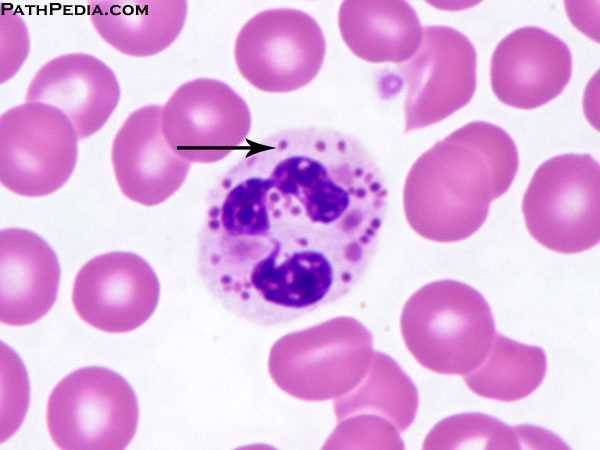Page Contents
- 1 WHAT IS IT?
- 2 WHAT CAUSES IT?
- 3 WHY IS IT CONCERNING MEDICALLY?
- 4 WHAT IS THE INTIAL PRESENTATION?
- 5 WHAT ARE IMPORTANT ELEMENTS OF THE MEDICAL HISTORY?
- 6 WHAT ARE IMPORTANT FEATURES OF THE PHYSICAL EXAM?
- 7 CLINICAL WORKUP: SERUM STUDIES
- 8 CLINICAL WORKUP: IMAGING
- 9 CLINICAL WORKUP: MICROSCOPY
- 10 HOW DO WE NARROW THE DIFFERENTIAL?
- 11 WHAT IS OUR THRESHOLD FOR DIAGNOSING THIS CONDITION?
- 12 PATIENT MANAGMENT: SYMPTOM RELEIF
- 13 PATIENT MANAGEMENT: DISEASE TREATMENT
- 14 PATIENT MANAGEMENT: PROPHYLACTIC MEASURES
- 15 COULD THIS HAVE BEEN PREVENTED?
- 16 ARCHIVE OF STANDARDIZED EXAM QUESTIONS
WHAT IS IT?
Chediak-Higashi syndrom is an autosomal recessive immunological disorder that is characterized by partial occulocutaneous albinism and recurrent cutaneous infections.
WHAT CAUSES IT?
This condition is caused by a defect in the lysosomal trafficking regulator gene (LYST): this mutation results in the microtubule dysfunction during the phagosome-lysosome fusion. Ultimately, this mutation manifests as impaired phagosome lysosome fusion, compromising the ability of phagocytes (like neutrophils) to combat against pathogens.
WHY IS IT CONCERNING MEDICALLY?
This immunodeficiency will result in recurrent pyogenic infections. Furthermore, abnormal melanin stage in melanocytes causes partial oculocutaneous albinism.
WHAT IS THE INTIAL PRESENTATION?
Patient Chief Complaints:
- Skin infections
Detected Medical Problems:
- Pancytopenia
WHAT ARE IMPORTANT ELEMENTS OF THE MEDICAL HISTORY?
Risk Factors:
Medical History:
- Recurrent cutaneous infections: especially with Staphylococcus aureus and Streptococcus pyogenes.
WHAT ARE IMPORTANT FEATURES OF THE PHYSICAL EXAM?
Vital Signs:
Neurological Exam:
- Nystagmus
- Peripheral and cranial neuropathies
CLINICAL WORKUP: SERUM STUDIES
Peripheral blood smear: this can demonstrate the presence of abnormal giant lysosomal inclusions in granulocytes and platelets.

CLINICAL WORKUP: IMAGING
CLINICAL WORKUP: MICROSCOPY
Light microscopy: this can demonstrate the presence of abnormal giant lysosomal inclusions in granulocytes and platelets
HOW DO WE NARROW THE DIFFERENTIAL?
Conditions that present similarly and how to exclude them:
WHAT IS OUR THRESHOLD FOR DIAGNOSING THIS CONDITION?
PATIENT MANAGMENT: SYMPTOM RELEIF
PATIENT MANAGEMENT: DISEASE TREATMENT
PATIENT MANAGEMENT: PROPHYLACTIC MEASURES
COULD THIS HAVE BEEN PREVENTED?
ARCHIVE OF STANDARDIZED EXAM QUESTIONS
This archive compiles standardized exam questions that relate to this topic.
Page Updated: 04.06.2017